Spatially Limited Gardening: The Indoors is the New Outdoors
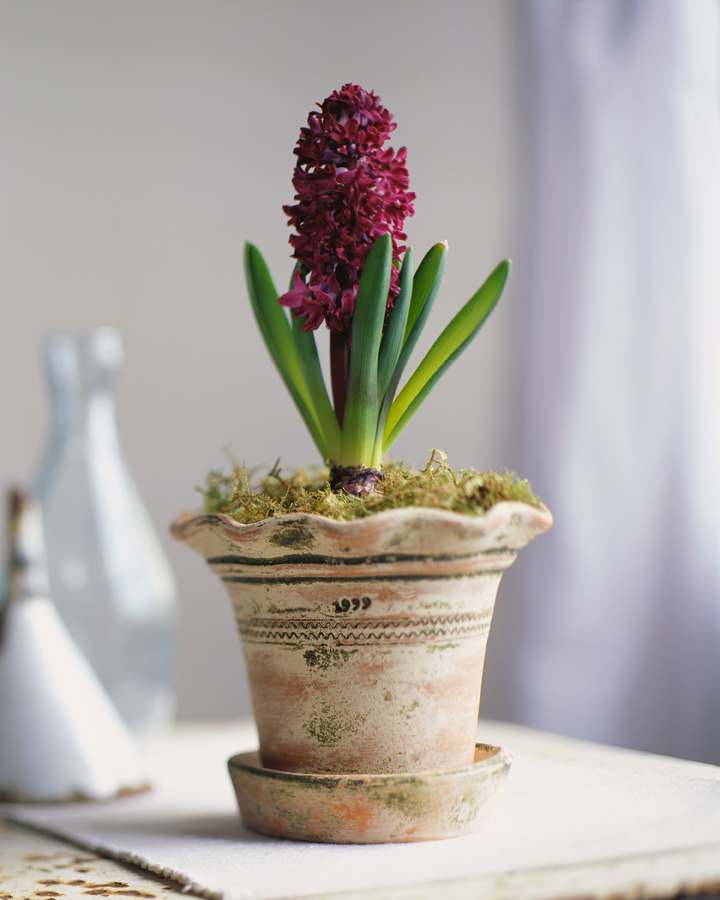
Posted in Living by Windermere Guest Author
 It is the official start to the gardening season! For those who have large outdoor spaces, it is the perfect time of year to make a trip to the home and garden store, work in your gardens, and plant new growth. For those who live in smaller city quarters and whose outdoor space comfortably holds little more than a potted plant, we are forced to be more creative with our green space.
It is the official start to the gardening season! For those who have large outdoor spaces, it is the perfect time of year to make a trip to the home and garden store, work in your gardens, and plant new growth. For those who live in smaller city quarters and whose outdoor space comfortably holds little more than a potted plant, we are forced to be more creative with our green space.
Decorative plants and nurturing vegetation is something that makes my house a home, even if small city living quarters has forced us to learn to take the outdoors- in and work with what space we have. Indoor plants, flowers, and gardens are a pleasing alternative when you do not have the space or the desire to be outdoors. Adding some green to your home can be decorative, fragrant, and even edible. Planting and nurturing your growth is a fun do-it-yourself project that can be a whole household activity.
Where to start
How will you grow and what supplies will you need? First decide on your method of growing.
Traditional Potted Plants are a great starting point for the non-gardening types. Potting plants is relatively simple, cost efficient, and spatially low maintenance. Check out these ideas for potting and planting in small spaces.
Vertical Gardens break away from the customary terracotta pot. They are both modern and space saving. In a vertical garden you are able to grow a variety of plants, flowers, herbs, and vegetables. They can be practical and decorative inside or out. Learn more about creating your own vertical garden here.
Hydroponic Systems are a soil-free gardening solution that can involve little to no pesticide use. Green Tree’s Hydroponics reports that the growth rate of a hydroponic plant is 30-50 percent faster than that of a soil plant. Here’s what it takes to build your own, however you can also purchase hydroponic systems online.
Terrariums are “making a comeback” according to the New York Times. Terrariums can be uniquely ornamental and perfect for tight spaces that need a hint of green. Check out some samples and get design ideas here.
What growing methods have worked well for you?
What to grow?
That are good to eat …
Herbs: growing edible items can be very rewarding. Herbs are my go-to item to grow inside because they are low maintenance and take up little space. I prefer to pot basil, parsley, chives, thyme, cilantro, and oregano.
Grasses, like wheat grass, are becoming popular to grow indoors and decorate your home with.
Fruits and vegetables tend to take up more space and are more demanding. However tomatoes, peppers, radishes, leaf lettuce, potatoes, and carrots are a few fruits/vegetables that will grow well indoors.
That are good to look at …
Several flowers and house plants will flourish and bloom indoors. I enjoy the fragrance of Gardenia and the appeal of a Boston Fern in a hanging basket. However, using a plant encyclopedia will help you find which plant is right for you and your home.
What do you prefer to grow?
Making it look good?
The great part about bringing your garden inside is that it lets you use vegetation as a decoration. Whether you prefer to arrange flowers, string kokedama, or paint a fun plant pot, your vegetation and the way you display it can have an impact to your overall décor. How do you decorate with your vegetation?
Brittany Lockwood works in Marketing at Windermere Real Estate. She is the in-house expert onweatherizing, yard-sales, and interior design.
Make the Most of the Home You Have


If you have been in your home for a while you may be restless for change. The great part about having a home of your own is you can make improvements and give your home a chance to evolve over time. You just need to help your home live up to its potential! Here is a top ten list of improvements that will help you make the most of your home.
-
- Find your home’s purpose. Each home is as unique as its owners, so in order to fully utilize your home, consider how you view your home’s purpose. Some people like to entertain, others find it a calm space in the frenzy of daily life; some nurture their families and others nurture their creativity. Your home’s purpose can be any combination of these and more, but it helps to consider the function of your space in order to ultimately find its purpose.
- Assemble a list. A list always helps me figure out where to start or prioritize what is the most important project. Think about what you want to change in your home, inspirations, and preferences.
- Make an “inspiration board”. An “inspiration board” is a great way to visualize your home’s decor. You can create a board online with a tool like Pinterest to organize ideas you love or you can do it the old fashioned way with a board, magazine cutouts, color swatches, and fabric samples. Doing this will allow you to see all the elements you like in one place so that you can then tie it all together into a room you love.
- Create a collection. If you have items that you like to collect, think about how to transform that collection into something you can display. If you don’t already have a collection of loved objects think about what this collection would be for you. You can center a room design around your travel souvenirs, old camera collection, figurines, unique plates, or familial objects. Adding to this collection over time can be a great way to keep your spaces new while maintaining a personal feel to your decor.
- Choose a new palate. Shake up your sensibilities and think of a color that will compliment your room while making a statement. It’s easy to fall into the white/beige standby to keep our rooms neutral, but sometimes a color that provides a contrast to your décor will make the room pop.
- Repurpose an old piece of furniture. Instead of replacing your furniture give it a facelift. You can have a sofa or chairs reupholstered or make use of a slip cover. Also, Painting and staining can add new life to your wood pieces.
- Rearrange. Moving furniture around is another easy way to reinvent your space. Try placing your sofa on an angle to open up your entertaining room or move your lamps to improve lighting. You can also think about moving a piece of furniture into a room to give it new life, like using a unique dresser for a credenza or a chair as a side table.
- Make a room of your own. Find some space in your home that is uniquely yours, whether this is the corner of the guest room or an office of your own. It can be very rewarding to have a space that you can organize to fit your personal needs without the worries of others intruding
- Find an inspirational object. Have you ever fallen in love with an object that inspired you to want to completely redo a room to accommodate it? Designing a room around an inspiring object can be a great way to create a space that truly embodies your design sensibility.
- Find design motivation. Home design evolves over time and can be sustained by finding items that inspire you. Read magazines and books that inspire your interests in architecture, design, art, etc. Or find stores and flea markets that sell pieces that influence your aesthetic. Or bring a camera with you when you’re doing your favorite activities and bring back memories or inspirations. Most of all have fun!
What inspires your home design?
By Tara Sharp
Moving Life Home
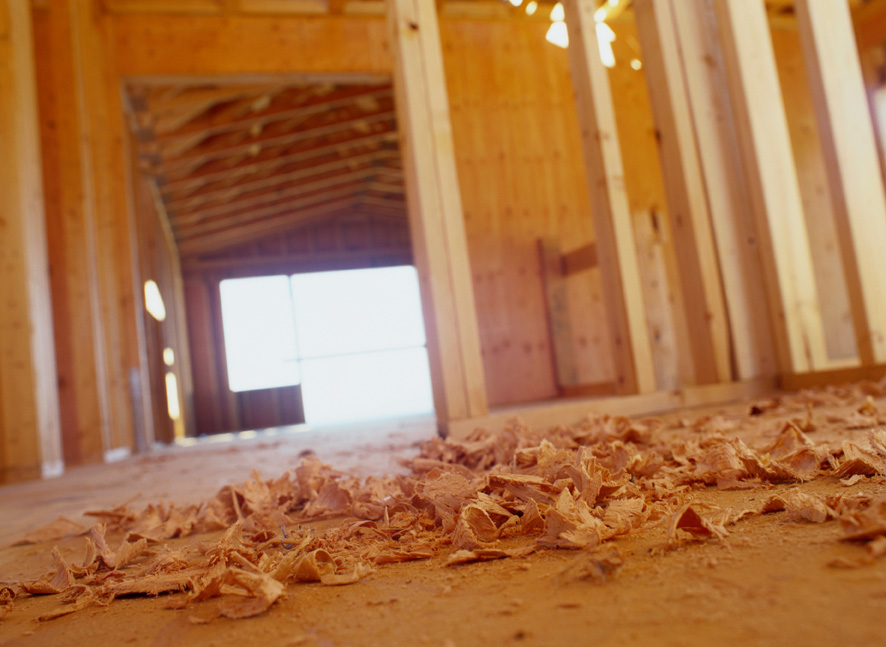

Ipod and water bottle in hand, Dave strolls down a flower lined path toward his first destination of the morning, his gym. At the door to the gym, he is greeted by his wife, Janet. Janet takes a sip of her latte, gives Dave a kiss and tells him she’s off to the studio. While Dave is turning on some music and contemplating how many miles he’ll put on the treadmill today, Janet walks up a staircase to her studio.
The kiln in the corner warms the studio from the chill of the rainy night before. Janet hangs her coat and inspects yesterday’s creations on the drying rack. In her mind, she’s sizing up what glaze and design she’ll use for each piece. Dave will head to his office on the other side of the building after his workout.
Depending upon where you live, you might have your own vision of this scene. Perhaps it’s a downtown building that has ground level shops, like a gym, and small spaces upstairs for rent, like a studio. Maybe an office park in the suburbs. Perhaps even a co-op village. For Dave and Janet, though, the gym and studio are in a part of their backyard that used to be home to a jungle gym, sandbox and 4-square court. When they became empty nesters, they decided to consolidate their life, cut commuting expenses, and take advantage of some unused space at home. They created a two story, backyard cottage that had a gym, bath and shower, and kitchenette on the ground floor, as well as side-by-side offices on the upper level. Dave, rather than a kiln and pottery supplies, has a desk and display of catalogues that he will use in presentations when clients visit him.
Backyard cottages have been gaining in popularity and attention lately. With the changes in the housing market making it impractical to sell some homes, possibly gas prices making long commutes impractical, or maybe the desire to simplify a life that’s been too removed from home, its’ easy to see why someone might choose to build one. Many people build them to be guest quarters, mother-in-law apartments, a rental unit for additional monthly revenue, or temporary lodging for boomerang offspring who are trying to land that first job out of college. Some of these are as simply built as a miniature starter home, and yet others are elegantly equipped as a five-star hotel.
To maximize the value of these buildings, they should be planned by an architect so that they will work for your intended use. In the example, Janet’s kiln would be heavy and very hot, so several building precautions would be warranted. One short cut to avoid would be to do anything less than fully permitted and inspected, as failure there can cost far more than the property tax levy to take care of later. It’s advised that unless you have lots of experience, have the riskier tasks done by subcontractors.
These buildings will add value to the homeowner’s property over time, as if they are built properly, they’ll appreciate in conjunction with the value of the home. The reasons for having one are many and personal, but if you were to drive down many city streets, you will find one hiding under the trees in a corner of the backyard.
Can you see a point of your life, and a place on your property, in which a backyard cottage would make sense?
 By Eric Johnson, Director of Education
By Eric Johnson, Director of Education
Johnson has several years experience as a real estate agent and real estate instructor, as well as experience in construction project management, digital media/publishing and insurance. He has a bachelor’s degree in anthropology from University of Colorado.
A little goes a long way: a top ten list for making the most of your home improvement
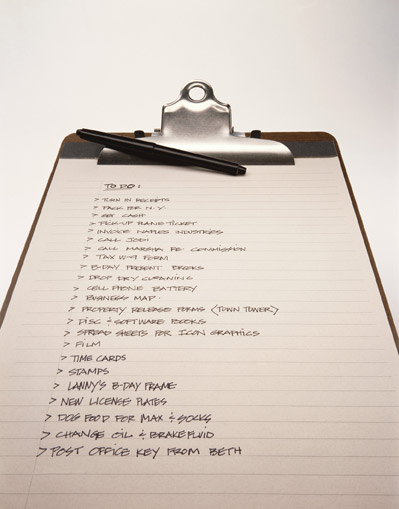

This weekend I spent the greater part of Saturday taking care of the ongoing household to do list and the transformation made a huge impact. There certainly is more to do, as is the nature of home improvement, but having a finite list of things to accomplish and making time to enjoy them made all the hard work worth it! Here is my top ten list of how to make the most of your time when tackling home-improvement projects.
1. Imagine your perfect place. Your home should reflect your personality, the way you spend your time, and fit your needs. If you want a place to entertain, to relax and meditate, to create art, nurture your children, or display your collections, you will want to consider your priorities. Once you have explored the possibilities the next step is to prioritize your to-do list in order to make the most impact.
2. Make a list. Some home project lists could go on and on (and on), so it’s a good idea to write out a list and discuss the details with the members of your household so you know where to start and who is responsible for what.
3. Prioritize. Once you know what needs to be done it’s time to prioritize the list. If there is something timely (like getting gutters before the fall) keep that in mind when prioritizing, but also think about those projects that will bring you the most joy in daily life.
4. Do one project that really makes a difference. I recently finished sprucing up the living and dining rooms with new curtains and new furniture for storage and display. These are the rooms I spend the most time in at home, so the difference is palpable to how I view my home. Now we are ready for a big dinner party which is one of the most important things in our household. From this experience, I realized that small changes and some cleanup can make a huge difference.
5. Keep it reasonable. Make sure your list is reasonable. The goal isn’t to get everything done in one weekend, which typically isn’t feasible anyway. Rather, you want the time you invest in your home to be enjoyable and give you the sense of satisfaction (and motivation to do more).
6. Gather your tools. Nothing will derail a project like not having the right tools. Once you know what you are going to accomplish make sure all your supplies are ready. You’ll be far more efficient if you hit the hardware store, fabric store, gas station, etc. prior to getting started.
7. Work together. Some projects are two-people projects. If you share your household, enlist other members to share the work. Some projects need two people to lift, spot, hand tools, push, pull, etc. If you live alone, have a work party by inviting a friend over to help. You can return the favor if they ever need help with a household project.
8. Enjoy the process. Blast music, take breaks, and step back to reflect on your household improvement. If you need to dedicate a weekend to doing your chores, you may as well still enjoy it!
9. Get the list done. If you’ve taken the time to make your list reasonable you shouldn’t have any trouble completing it. Doing so will reaffirm your sense of accomplishment, so when you look at what was done, you won’t be thinking about what you have to do next.
10. Bask in your success. Focus on the improvement, enjoy your space, and most importantly, use it! If you made your bedroom a sanctuary, light a candle and relax with a good book. If you reconfigured your kitchen for more efficient use, have your own Iron Chef moment and cook a huge meal. Just remember, all your planning and hard work should be enjoyed.
What are your tips for making the most out of your home?
Investing in home: building a foundation for memories

“Of course, thanks to the house, a great many of our memories are housed, and if the house is a bit elaborate, if it has a cellar and a garret, nooks and corridors, our memories have refuges that are all the more clearly delineated. All our lives we come back to them in our daydreams.”
Gaston Bachelard, the Poetics of Space
I have been following the news about the housing market pretty closely and am pretty disappointed with some of the articles declaring a case against homeownership. I couldn’t disagree more. If anything, I see the value of homeownership: responsible financial investment, social stability and community connection as more important than ever.
I was particularly moved by the story in the Seattle Times yesterday about the Lutz family in Ballard, a family with seven adopted siblings that are helping their parents move from their family home to a smaller condo now that their children have left the nest. Though their story is far from typical, it really resonates how home is the center of family life, a place where memories are created and how houses tell the stories of the lives we build while in their shelter.
Homes do that for people. They are the places where some of our most intimate stories unfold.
Finding and creating a home is an emotional, psychological, social and financial investment. There is a lot of energy involved in finding the place to envision the future, raise a family, and perhaps retire. There is no other investment as enjoyable as your own home. Investments in gold or stocks cannot compare to the feelings about a place where you collect memories, create spaces that reflect your ideals and develop to fit your needs over time.
Beyond the emotional ties to home, a number of studies have shown that home ownership has a great impact on feelings of personal autonomy, life satisfaction and increased investment in the community. The sense of satisfaction goes beyond the ability to paint walls whatever color we want, or make improvements to our homes on our own terms. It goes deeper by improving our sense of well being. Furthermore, when we have a stake in the community we live in, we participate more, making our neighborhoods safer and healthier for all members.
Not all the news about the housing market is negative, actually there are many great articles: “in defense of home ownership”, “ten reasons to buy a home “and “a dream house after all” to name a few. But regardless of where you stand on the housing market right now, we can all likely agree that there is no place like a home.
All of our experiences of home are unique. Please share your best memories of home.

Sellers: Making the Most of your First Impressions
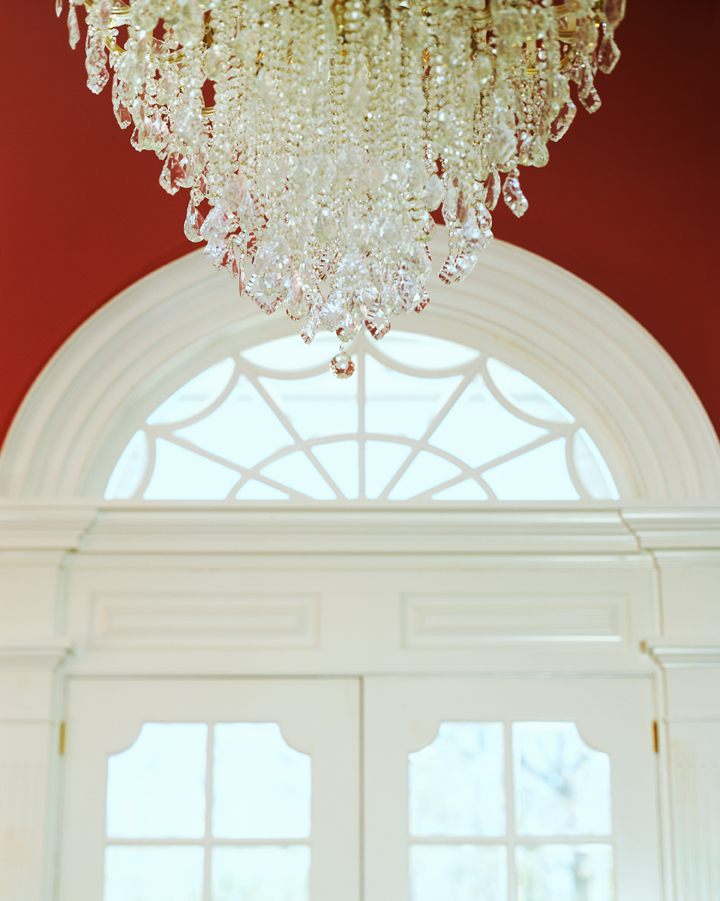

As the old saying goes, you only have one chance to make a first impression. If you’re selling your home, it’s true, except that there are several impressions to be made, and each one might have its own effect on the unique tastes of a prospective buyer. I’ve worked with scores of buyers, witnessed hundreds of showings, and I can summarize that experience down this: a tidy and well maintained home, priced right, listed with professional photographs, enhanced curb appeal and onsite visual appeal will sell fastest. We all know first impressions are very important, but the lasting impressions are the ones that sell your home. It’s not easy, but if you can detach a little and look at your home from a buyer’s perspective, the answers to selling it quickly may become obvious to you.
The very first impression your home will make is through its web presence, whether on Windermere.com, the MLS, Craigslist or any multitude of websites. Fair or not, the price is typically the very first thing people look at, and it will be the measurement by which your home is judged. You can always adjust to the right price later, but the impact is lost. It will take something dramatic to get a buyer to reassess the way they feel about the value of your home.
Closely following price are the listing photos. According to this recent article in the Wall Street Journal, professional photos will not only impact your first impressions, it may also make a difference in the final selling price. Great photos might even overcome those initial price objections. Does the exterior photo capture your home at its hi-res best? Does the accompanying text enhance or distract? Online, your home has only a few seconds to capture the home buyer’s attention. If it doesn’t, they’ll click the “Back” button and resume their search. The goal is to have buyers excitedly calling their agents to arrange a showing.
Another old saying is “Location, location, location,” and sure enough, the first live impression of your home is the location. Forget this one; you can’t move your home. There’s not much you can do about location, right? Actually, there is one thing you can do: price it right from the start.
Let’s move on to the first time a buyer sees your home as they pull to the curb out front. Go stand out at the curb and look at it the way you would if you were shopping for a home. Sometimes, a couple hours of labor and $100 worth of beauty bark can be worth thousands in the sales price. I’ve had buyers choose not to get out of the car when we pulled up to a home that they had once been excited to see.
Likewise, I’ve had buyers say they’ve seen enough simply by peaking into the front door. The nose trumps the eyes when it comes to the first impression when entering the house. Buyers get more caught up in the details. Once the home shopper is inside, it’s easy for them to get distracted and focus on something that seems to have nothing to do with the structure they will be buying, from a dirty dish in the sink to a teenager’s bedroom that’s been decorated in posters and/or melodrama. Do everything you can to set a positive lasting impression. The buyer may look at dozens of homes. What is your strategy to convince them to make an offer on yours?
Guest post by Eric Johnson, Director of Education
Weatherizing your home: protecting your investment through the harsh winter months
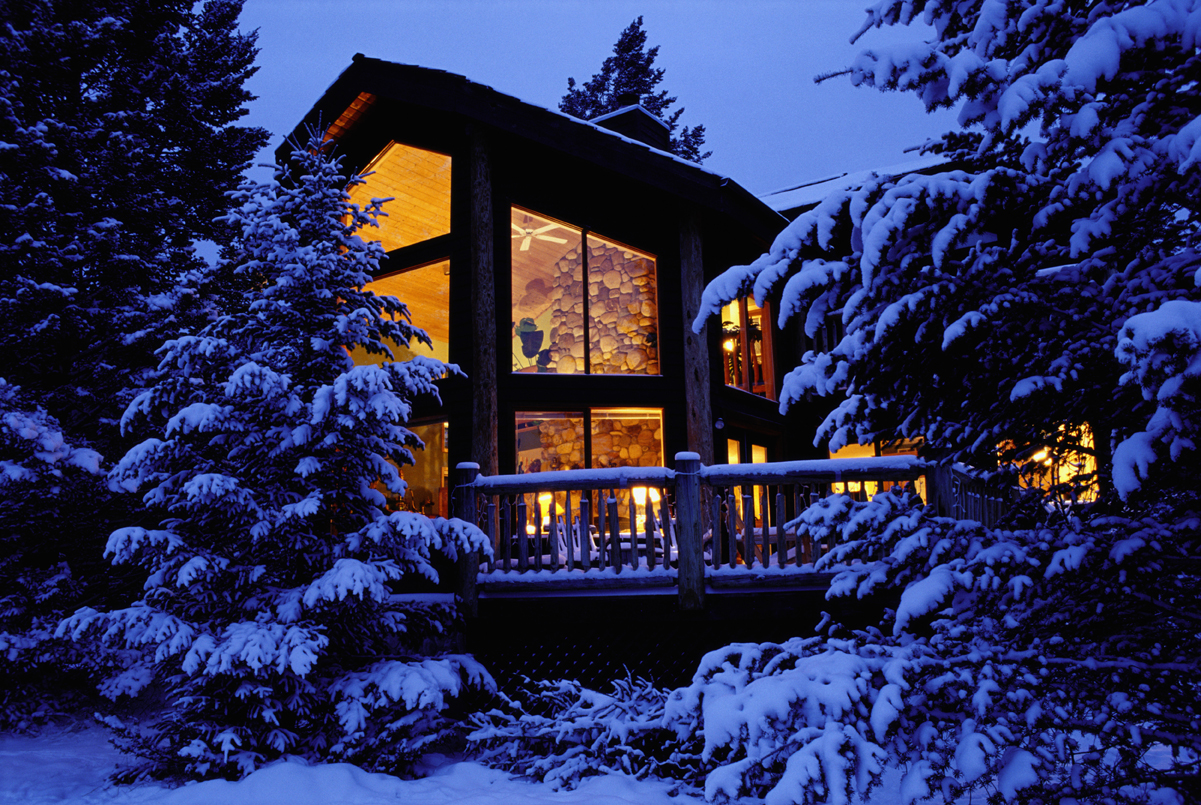
 It seems the winter is settling in early through much of the West Coast this year, with October frost and early winter warnings. Last week The Seattle Times reported, “This year will bring the most intense La Niña conditions since 1955 … Meteorologists say more rain, colder temperatures and bigger snowstorms are likely.” Whether the meteorologists are right this year or not, now is the time to do some home repair so you can enjoy the winter inside your warm house.
It seems the winter is settling in early through much of the West Coast this year, with October frost and early winter warnings. Last week The Seattle Times reported, “This year will bring the most intense La Niña conditions since 1955 … Meteorologists say more rain, colder temperatures and bigger snowstorms are likely.” Whether the meteorologists are right this year or not, now is the time to do some home repair so you can enjoy the winter inside your warm house.
Weatherizing your home should be more than just packing in your patio furniture, checking your furnace and cleaning out your rain gutters, though these make a big difference in preparing your home and avoiding December disasters. Weatherizing your home–especially in light of harsh warnings–will protect your investment from preventable damage, save money on energy costs and, most importantly, keep your home safe and warm for you and your loved ones throughout the winter season. Here is a useful checklist to manage your weatherization project.
Getting started: Check your toolbox to make sure you have all the materials you need for home maintenance in one place. This NY Times article provides a good list of the tools you’ll really need to maintain your home. After your toolbox is put together, you can confidently begin the maintenance on your home.
Insulation: According to the Sustainable Energy Info Fact Sheet “Insulating a home can save 45-55% of heating and cooling energy”. For the best results, your home should be properly insulated from the ceilings to the basement. However, if insulating your complete home is not in your budget, the U.S. Department of Energy states, “one of the most cost-effective ways to make your home more comfortable year-round is to add insulation to your attic.” By starting in your attic and progressively adding insulation to other areas of your home over time, you will avoid spending a large sum of money up-front.
Cracks & Leaks: Do a run-through of your entire house for cracks and leaks, from your roof to your baseboards. Winter weather is unpredictable. Whether your area gets rain, wind or snow, cracks in your house can lead to cold drafts or leaks that cause water damage. Do-it-Yourself.com reports, “The average house, even when well-insulated, contains cracks and gaps between building materials that add up to a hole about 14 inches square. All year long, a leaky house not only wastes energy, but can lead to water damage and provide a path for insects”. Depending on your house type, most cracks can be easily filled with supplies from your local hardware store in a do-it-yourself fashion. Use caulk to seal any cracks in the permanent building materials.
Windows & Doors: Another common place for heat leakage is in your windows and exterior doorways. Make sure seals are tight and no leaks exist. If you have storm windows, make sure you put them on before the cold season begins. This 5 minute video, How to Caulk Windows & Doors, demonstrates how to find leaks, pick the correct tools to use, and fill in the leaks. Don’t underestimate the difference some weather strips and a door sweep can provide in preventing drafts and keeping the heat in.
Rain Gutters: Clean your rain gutters of any debris. Buildup will cause gutters to freeze with ice, crack and then leak. Once you have removed the residue from the drains, test them by running hose water to make sure cracks and leaks have not already formed.
Pipes: Pipes are a number one risk in winter climates. A burst pipe can become a winter disaster in a matter of seconds. Remember to turn off your exterior water source and take in your hose. Internally, wrapping your pipes is a recommended precaution to take. This article from Insights, Natural Hazard Mitigation advises, “Vulnerable pipes that are accessible should be fitted with insulated sleeves or wrappings, the more insulation the better”.
Heating System: What is one thing gas fireplaces, wood burning stoves, and central air heating systems all have in common? They all need to be cleaned and maintained. Check and clean your indoor heating system thoroughly. This is important to avoid dangers such as house fires. If you use an old fashioned wood stove, make sure there is no leaks and that all soot build up or nests are removed. If a furnace is what you have remember to change the filters as recommended or clean out your reusable filters.
Fireplace & Wood burning stoves: Make sure to have chimneys and air vents cleaned early in the season if you are planning on warming your home with a wood-burning source. When your fireplace is not in use make sure to close the damper, some resources estimate an open damper can increase energy consumption as much as 30%.
Outside: As we mentioned before make sure you bring your patio furniture inside (or cover) for the winter- but don’t forget other, smaller items such as your tools, including a hose and small planting pot. These items can be damaged or broken in extreme cold. Clear out any piles around the side of your house, checking for cracks as you go so to avoid providing shelter for unwelcomed guests over the cold season.
If your property has large trees check for loose branches and call someone to trim back any items that may fall in your yard, on your roof or even damage a window.
Emergency Kit: Make sure your emergency kit is up-to-date with provisions, batteries, fresh water, food for animals, entertainment for kids, etc- especially if you live in an area prone to power outages.
When it comes to protecting our investments and our families’ safety “an ounce of prevention is worth a pound of cure” is a good philosophy. Your winter preparedness plan will fit your property, schedule and needs. What are some tips you have for preparing for winter? What are some of your favorite activities to do at home over the winter while weathering out a storm?
By Brittany Lockwood
You may know Brittany as the helpful voice behind the Marketing Solutions Help Desk. She grew up in Cheney, Washington so she knows a thing or two about harsh winters.
The First Decade
The other day I was searching for my daughter’s cell phone number – which I haven’t memorized because I simply speed-dial it – and I realized it’s been years since I memorized anyone’s phone number. And this was just after I’d booked a flight online and selected my seat, and downloaded some new music into my iPod.
It occurred to me that these are just three examples of the tremendous changes that have happened just since the new millennium began. At the beginning of this decade, iTunes, YouTube and Facebook did not exist. Today, their combined daily views and downloads are in the billions.
An article in Newsweek a few months ago highlighted how much things have changed in a decade. The numbers are staggering and surprising.
-
- Ten years ago, a total of 400,000 text messages were sent per day; today 4.5 billion are zinging through cyberspace every day.
-
- In 2000, 12 billion emails were sent each day; today 247 billion are sent daily (many of which were in my spam filter this morning).
-
- Ten years ago, about 208 billion letters were mailed through the postal system each day; today the number of letters mailed daily is less than 176 billion.
This decade has been tumultuous, to say the least. Beyond the tremendous technology-driven advances, we are still struggling with this economy. Unemployment rates are too high. Banks are still struggling. And it is heartbreaking that people have lost their homes.
Even though there is a lot of uncertainty, I remain optimistic. I am realistic enough to know that this recovery will take awhile. But recover we will.
One thing that hasn’t changed in the past decade is the resiliency of real estate over time. When you look at median single-family home prices ten years ago versus this year, you’ll see that home values have increased since 2000. This is encouraging, especially when you consider that the stock market today is the same place it was 10 years ago. For most people, their home is worth more today than when they bought it. It might be worth less than it was two or three years ago, but real estate has never been about day trading. It’s a long-term investment. And if the last 10 years, or 100 years, are any indication, we can count on growth in home values.
And that’s a good thing.
July Median Home Prices*
2000
2010
National
$151,100
$182,600
*Source: NWMLS
What are some of the most memorable changes for you in the past decade?
Managing Mold: How homeowners can avoid costly mold problems
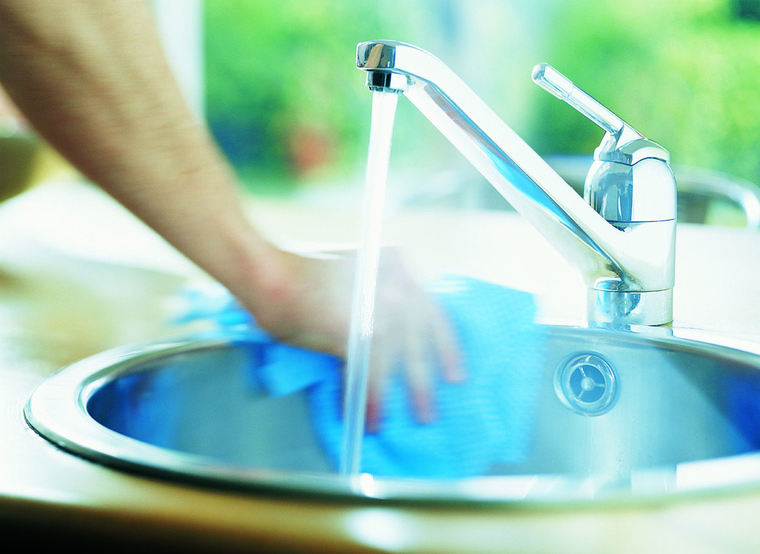
 Whether you are buying or selling a home, mold has become a hot issue. Health concerns and potential damage make mold a red flag for buyers. And even if you’re not planning to sell any time soon, taking care of mold problems now can prevent even larger problems in the future. Contrary to what some people think, mold is not a geographic problem—it can occur anywhere, no matter where you live. Here is some basic information about mold and how to deal with it.
Whether you are buying or selling a home, mold has become a hot issue. Health concerns and potential damage make mold a red flag for buyers. And even if you’re not planning to sell any time soon, taking care of mold problems now can prevent even larger problems in the future. Contrary to what some people think, mold is not a geographic problem—it can occur anywhere, no matter where you live. Here is some basic information about mold and how to deal with it.
What is mold?
Molds are microscopic organisms that are found virtually everywhere, indoors and outdoors. There are thousands of different kinds of mold. Their natural function is to help break down dead materials such as stumps and leaves so the nutrients can be used by the environment. For molds to grow, they need two things: an organic food source—such as leaves, wood, paper or dirt—and moisture.
Problems associated with mold
Mother Nature uses mold to decompose plant material. Unfortunately, when present indoors, it can be equally destructive. Mold growth can damage furnishings, such as carpets, sofas and cabinets. Left unchecked, it can also cause serious damage to walls and structural elements in your home.
Mold is present everywhere, and most people tolerate exposure with no adverse effects. If allowed to spread, however, it may cause problems. As molds grow, they release thousands of tiny spores that travel through the air. When inhaled in large enough amounts, these spores may increase the risk of adverse health effects in some people, particularly respiratory problems. A less-common strain of mold called “black mold” can be particularly troublesome to those who are especially sensitive.
Common causes of mold problems
Don’t think that just because you live in a hot, dry climate, your home is not vulnerable to mold. There are many sources of mold problems, from faulty air conditioners to poorly positioned sprinkler systems. Federal standards for energy-efficient home building have even contributed to the problems. By making homes more airtight, construction techniques in newer homes can trap moisture inside.
Here are the most common sources of mold inside the home:
- Flooding
- Leaky roofs or damaged gutters
- Heating or cooling system problems
- Poor drainage next to foundation
- Plumbing leaks from toilets, refrigerators and dishwashers
- Damp basement or crawl space
- Leaking windows or doors
- Steam from shower or cooking
- Indoor exhaust from clothes dryer
What to look for
If you can see or smell mold inside your home, it’s time to take measures. Any area that has sustained past or ongoing water damage should be thoroughly inspected—you may find hidden mold growth in water-damaged walls, floors or ceilings. Walls and floors that are warping or discolored can also indicated moisture problems, as can condensation on windows or walls.
Preventing mold in your home
Since mold is always present, there’ no way to eliminate it completely. You can control indoor mold growth, however, by controlling moisture.
- Remove the source of moisture by fixing nay leaks or other water problems.
- Make sure bathroom fans and dryers are properly vented to the outside. Always use the exhaust fan when cooking or showering.
- Use a dehumidifier or air-conditioning system. Make sure your AC system is well maintained and is the correct size for your home. A faulty AC system can cool the air without removing the water vapor, creating high humidity.
- Insulate your home well to prevent indoor condensation.
- Have your heating, ventilation and cooling systems professionally cleaned annually. Air-duct systems can easily become contaminated with mold.
- Regularly clean moist area such as the bathroom with products that treat mildew.
- Dry-clean, rather than wet-clean, your carpets.
- Avoid carpeting bathrooms and basements.
- Clean any moldy surfaces as soon as you notice them.
Mold clean-up
Mold is a manageable problem. Unless it is dealt with correctly, however, it will continue to come back. If your mold problem is severe or if you have extensive water damage, it’s best to call an experienced, professional contractor who specializes in mold removal. If you have a mold problem that is isolated to a small area, less than a square yard or so, you can try to resolve it yourself.
Porous items that are hard to clean, such as carpet and drapes, should be discarded. Moldy sheetrock and ceiling tiles can be removed and replaced.
Hard, nonabsorbent surfaces such as glass, plastic and metal can be thoroughly cleaned with soap and water. Allow to dry completely.
For solid items that are semi-porous, such as floors, cabinets and wood furniture, scrub with an ammonia-free cleaner and hot water to remove all mold. Rinse with water and dry thoroughly. After cleaning, apply a mildewcide to kill mold and spores.
When cleaning mold, remember to wear gloves, a mask and eye protection, and work in a well-ventilated area. Never mix cleaner containing bleach and ammonia; this can result in the release of a toxic gas. And be sure to throw away any sponges or rags that you use for cleaning.
 Facebook
Facebook
 Twitter
Twitter
 Pinterest
Pinterest
 Copy Link
Copy Link

 Purchasing a home can be a complex endeavor for even the most well prepared home buyer. You’ve diligently saved for your down payment, followed the market, researched agents and now you are ready to make an offer on your dream home. Don’t let these 5 “Deal Breakers” come between you and your new home.
Purchasing a home can be a complex endeavor for even the most well prepared home buyer. You’ve diligently saved for your down payment, followed the market, researched agents and now you are ready to make an offer on your dream home. Don’t let these 5 “Deal Breakers” come between you and your new home.